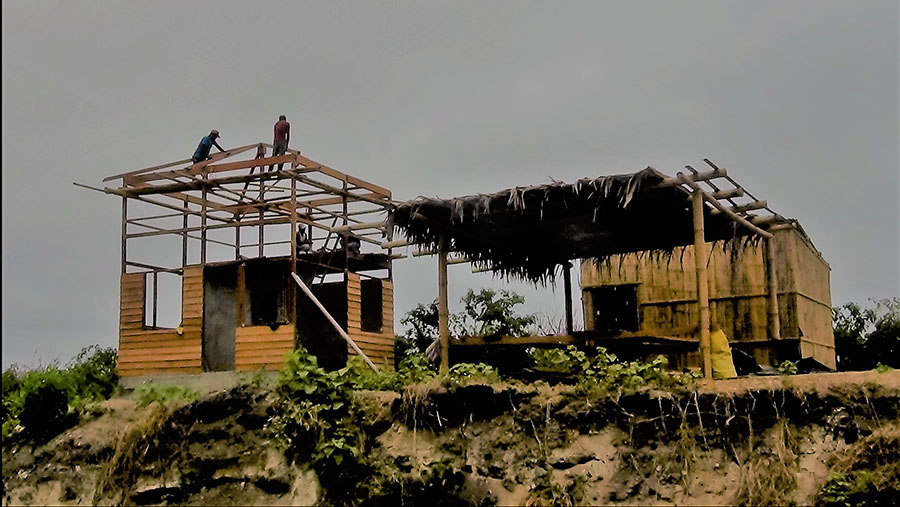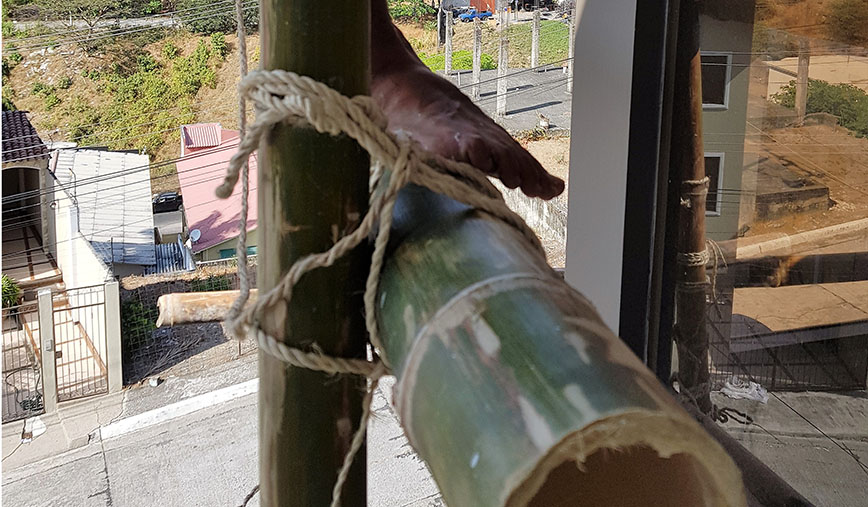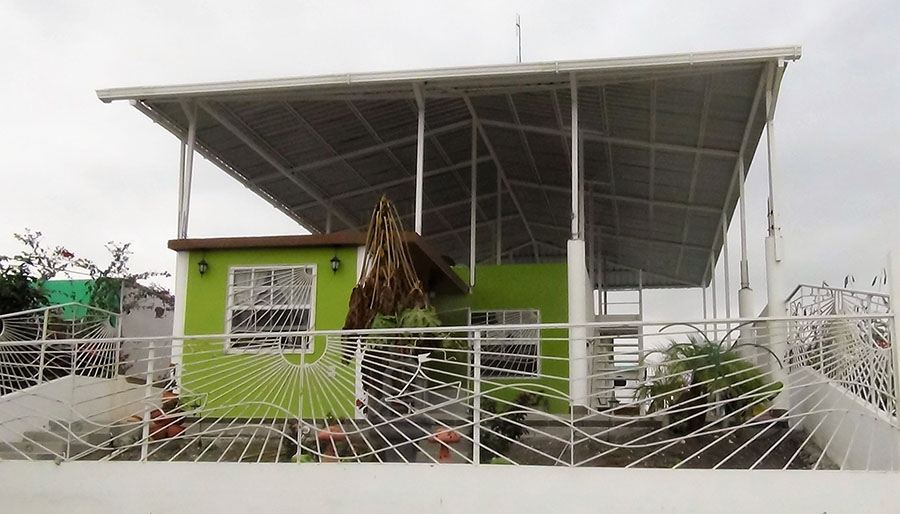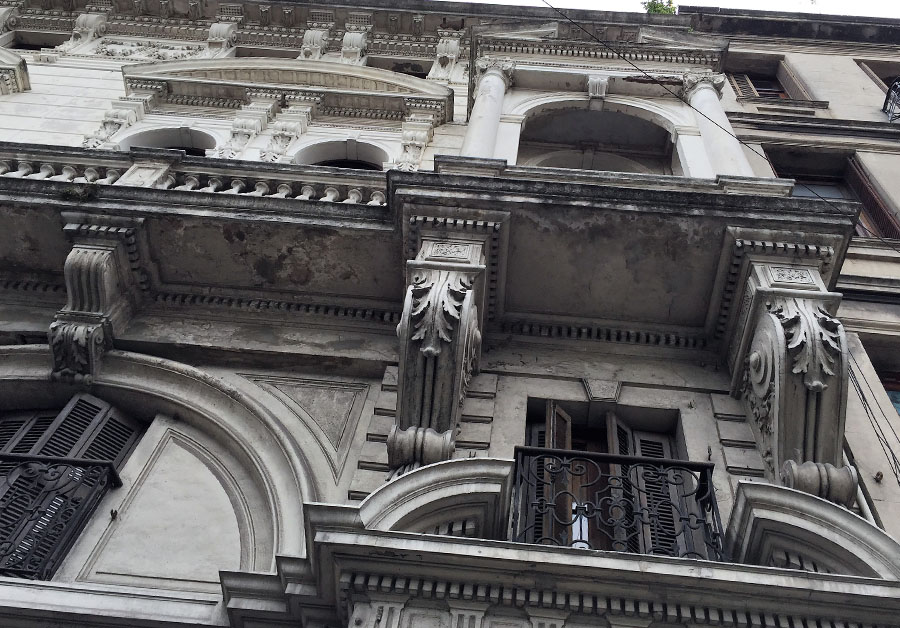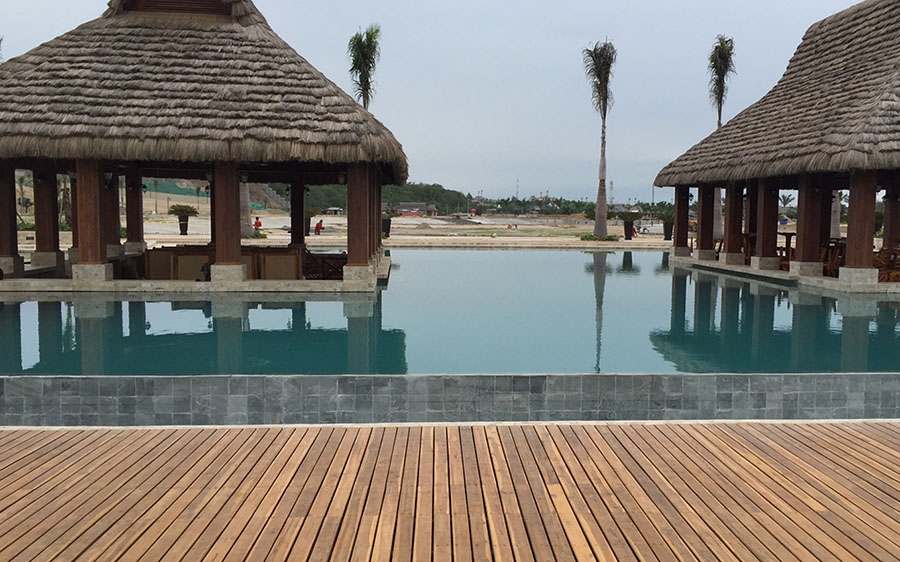
Equatorial sun changes the priorities in a construction sequence
This article is part of an ongoing series, Work in Progress: Vistas del Pacifico, on constructing homes in Ecuador
Any construction project begins the same way, with mobilization. You must get the porta-potty on site, maybe build some temporary fencing, get your material yard setup, perhaps a shed for tools. We do the same in South America, but it looks a little different.
For one, we need shade. The sun over the equator can be brutal at noon, and the workers need a canopy to lunch and nap under. Theft is a concern that temporary fencing won’t allay. So, we need a place for the guard to spend the night. We have two on out project near Ayangue, a little fishing village on the Ecuadorian coast. One guard during the day, and another one at night. We build the guard shack before we build anything else.
The guard shack may look primitive, but consider that millions of folks from Panama to Peru live in one of these traditional bamboo homes all their lives. As you drive the coastal areas, these “casas de caña,” or cane homes are commonplace. They cost about $500 in materials and labor, and as you can see, the shelter goes up in a day or two.
DAY 1: Guard Shack

Materials arrive at the job site, Gadua cane (Guadua angustifolia) posts and bamboo screening.
The thick Gadua cane, which grows wild next to regional rivers in the ever moist jungle soil, has become part of the landscape, although it originally came from Asia—it is the same thing we call bamboo. There is a native cane, which is much thinner, and used only for non-structural components, such as screens and demising walls.

The Gadua cane posts get buried in the earth, and will last about as long as an untreated fence post. Sometimes the structural cane is treated for termites with a biocide, but since we are building temporary shelter, the bamboo is buried au natural.

Nails help to hold pieces in place, but the real structural connections are wrought with nylon twine. Traditionally, the structural members were tied with strands of palm leaf.

The wall fill (or siding) is made of the native bamboo, which is thinner, and woven into sheets. You’ll note the zinc roof. Although not native, it’s become the most common sort of roofing, long lasting and cheap.
The square, concrete structure behind, serves a dual purpose: It’s the water tank, or cistern for our whole development of more than 30 residential sites, and will act as the foundation for my shack, where I’ll be spending evenings (and some weekends) once construction gets going in earnest.
There’s a great beach bay just about a hundred yards away.
By the end of the day, you can see the structure taking shape, and even imagine spending the night.
DAY 2: Shade Bar
The next morning, the guys are setting up the structure for shade bar. You need shade under a tropical sun, especially during the lunch break and occasional nap.

Unlike the house roof, which needs to remain waterproof under intense monsoon-like downpours, the shade area can allow a few drips. So, it’s made of cade, a rustic, roughly woven straw from the leaves of the tagua palm (Phytelephas aequatorialis).
Cade represents the cheaper, thicker strands of straw, which last about three years on a structure (if not blow off). They cost about a third of the price of the finer toquilla strands, from which high quality roofing materials are woven, as well as the rugged and emblematic Panama Hat, made famous by Teddy Roosevelt.

It’s a traditional Ecuadorian craft, and what I’ll be using on the “executive” bamboo shack over the cistern. What Teddy Roosevelt may not have known, when he brought the stylish “Panama” back to the USA, is that these durable sunhats were from Ecuador, and important for workers on the Panama Canal, to protect them from the heat and the rain. Photo credit: The New York Times photo archive, Public Domain, https://commons.wikimedia.org/w/index.php?curid=2953863

The seed of the tagua palm is soft and edible as hearts of palm in it’s infancy, but then hardens into such a tough, harder-than-coconut-shell, egg-shaped nugget that locals refer to it as “vegetable ivory.” You’d think it was stone, and craftsmen carve jewelry out of it. Photo credit: By Lombards Museum - Own work, CC BY 3.0, https://commons.wikimedia.org/w/index.php?curid=12558922

As the second day comes to an end, you can see the little house for our guard is about ready for occupancy. The finishing touch, is the front door and an elegant entry lockset.
All photo credits, unless otherwise noted, belong to Javier Gonzalez, a fine contractor, and now I discover, a very fine photographer.
— Fernando Pagés Ruiz is ProTradeCraft's Latin America Editor. He is currently building a business in Ecuador and a house in Mexico. Formerly, he was a builder in the Great Plains and mountain states. He is author of Building an Affordable House and Affordable Remodel (Taunton Press).


